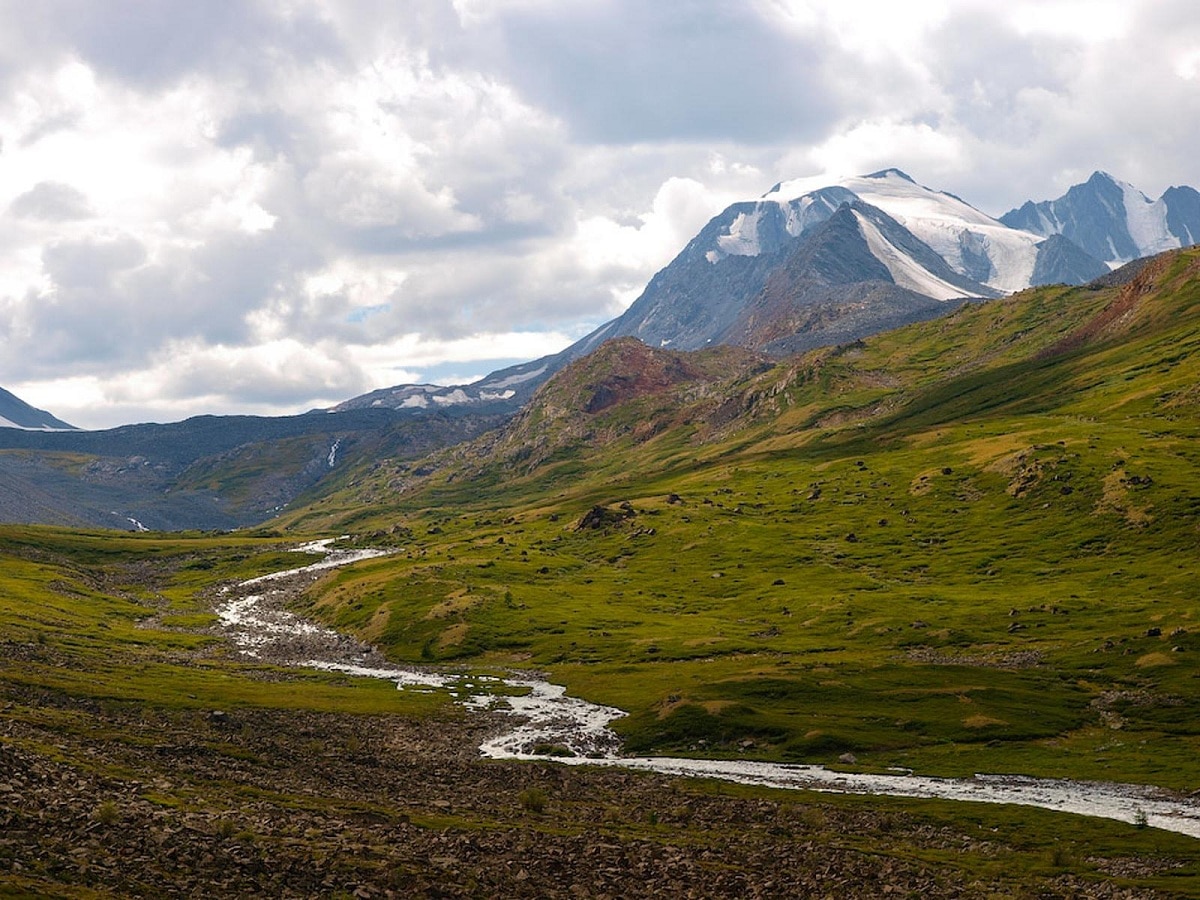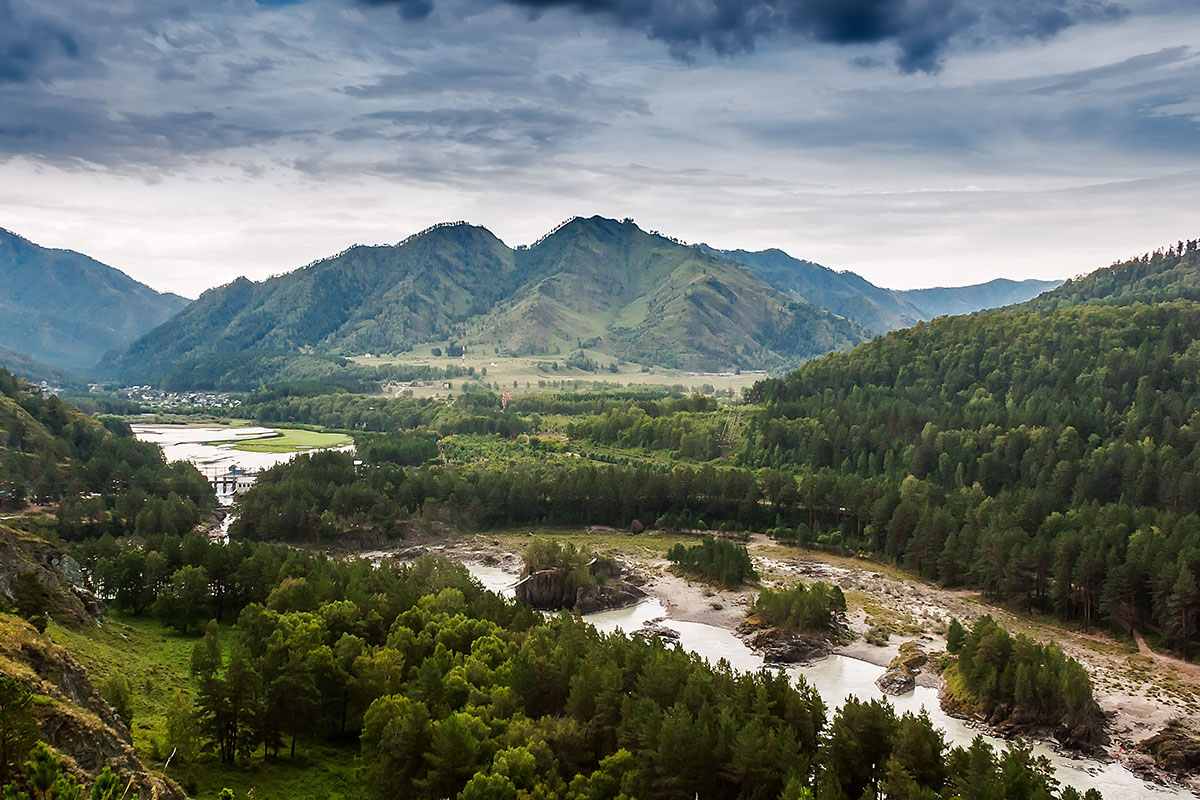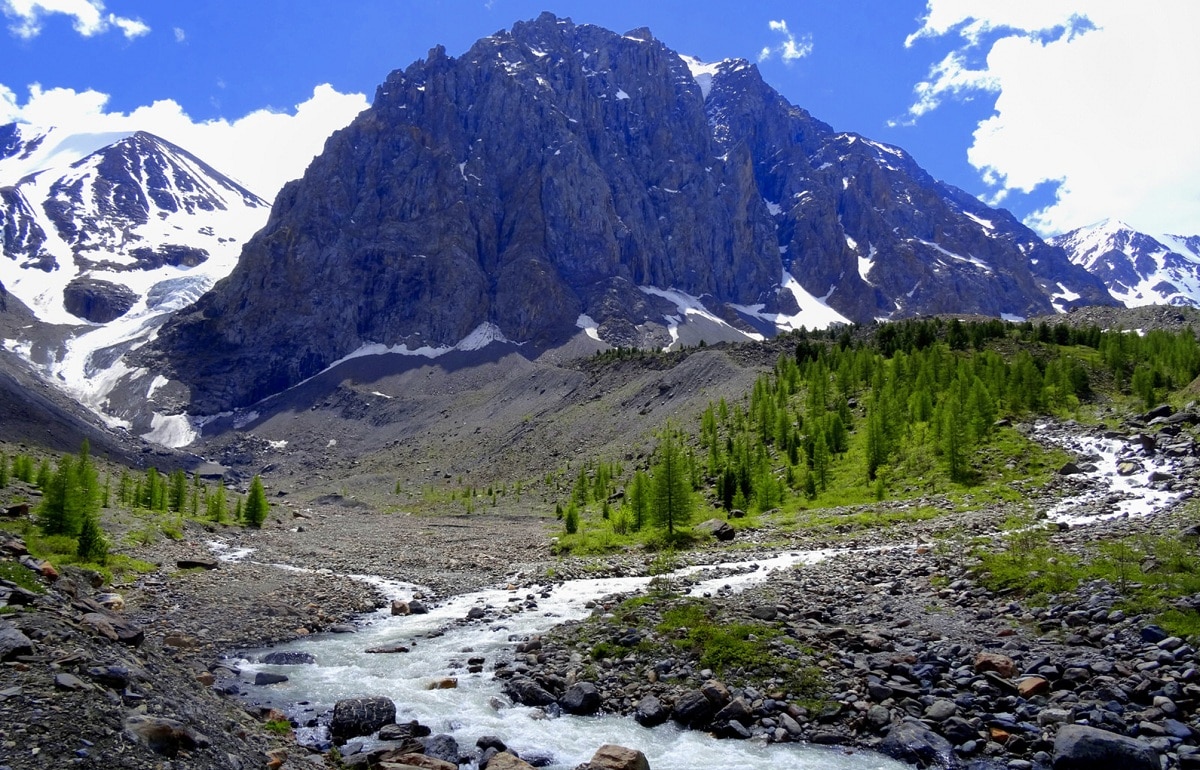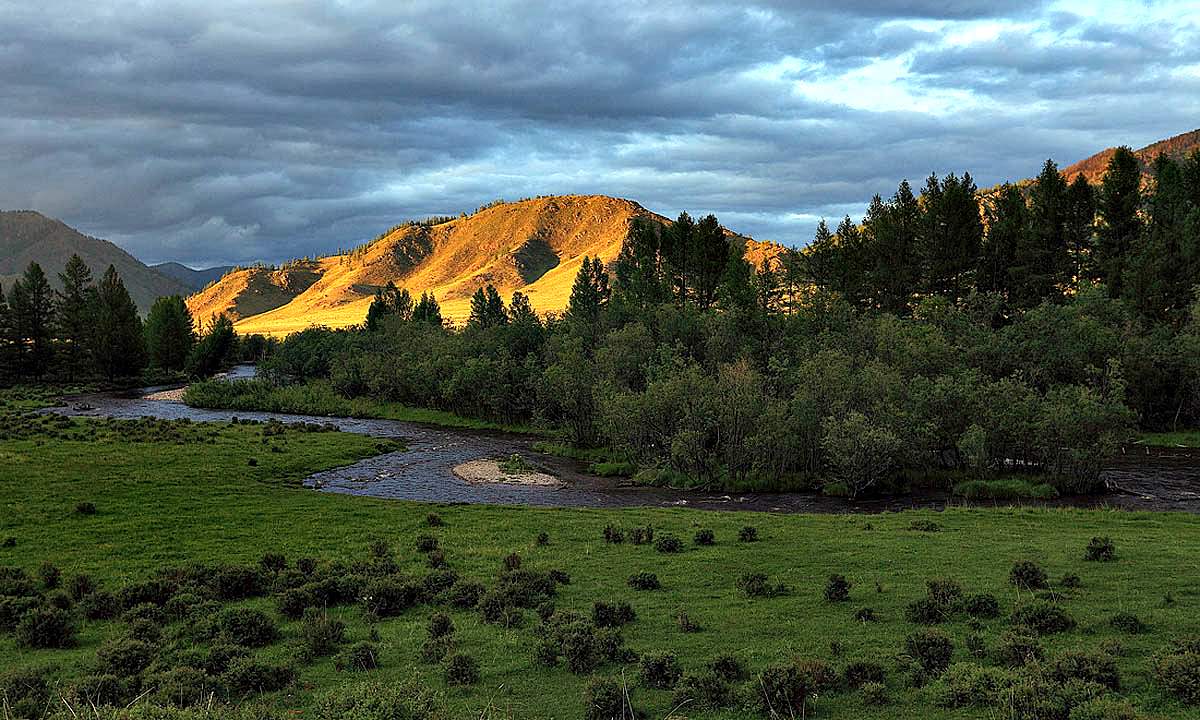
Today we are going to talk about one of the mountain ranges located in central Asia best known for being where according to Russia, China, Mongolia and Kazakhstan. Its about Altai massif. It belongs to the Altai mountain range and the Irtish, Obi and Yenisei rivers meet. It is a land full of myths and legends that have been passed down from generation to generation. Over time it has become a land where nature has been able to show everything it is capable of.
Therefore, we are going to dedicate this article to tell you all the characteristics, formation and origin of the Altai massif.
Key features

It is a massif that is located in a mountain range in central Asia and where Russia, Mongolia, China and Kazakhstan meet. There are vast steppes, lush taiga thickets and a modest desert charm. All of this rises in the grave splendor of snow-capped peaks with the laconic beauty of the tundra. The set of ecosystems that are present in this area makes the place very beautiful. With the passage of time it has become a very popular place for tourists to go hiking.
It is a place that spans almost 2000 kilometers long from northwest to southeast. Thus, the Altai Massif forms a natural border between the arid steppes of Mongolia and the rich taiga of southern Siberia. Both climatic zones create landscapes of surprising diversity. The truth is that the great diversity of landscapes that exists in the Altai massif is as if we were taking a turn through the pages of atlas geography books.
Not only does the landscape become a beauty so that the human being can visit it, it is the nest of thousands of plant and animal species.
Origin of the Altai massif

We are going to see what the origin that these mountains have had and the evolution over the years. The origin of these mountains can be traced back to the tectonic forces that exist due to plate tectonics. We know that tectonic plates are in constant motion due to convection currents in the Earth's mantle. This allows the plates to collide and generate new mountain ranges. In this case, the origin of the Altai massif can be traced through the collision tectonic forces between India in Asia.
There is a huge fault system running through this entire area and It is called the Kurai fault and another Tashanta fault. This entire system of faults causes thrust to occur in the form of horizontal movements, making the plates tectonically active. The movements of the rocks present in the Altai massif correspond mainly to granite and metamorphic rocks. Some of these rocks were elevated considerably near the fault zone.
The origin of the name of the Altai massif comes from Mongolia "Altan", which means "golden". This name comes from the fact that these mountains are truly a gem that surprises anyone due to their diversity and beauty.
Geographical data of the Altai massif

We are going to southern Siberia where there are three great mountain ranges in which the Altai Mountains stand out, being wonderful territory as incredible natural landscapes. These landscapes are home to the highest peak in the entire area of southern Siberia called Mount Beluja. It has an altitude of 4506 meters and is also known for being an area rich in metals. In the mountains of southern Siberia it is born from the largest rivers in the eastern part of Russia.
The Altai Massif is located in central Asia, approximately between 45 ° and 52 ° North latitude and between 85 ° and 100 ° East longitude of Greenwich, and nestled between the Russian, Chinese and Mongolian territories. The current forms of relief are of peaks, uneven areas at various heights, blocks and deep valleys. All this relief is the result of a complex geological evolution. And it is that at the end of the Mesozoic era the ancient mountains were formed by the Hercynian folding and were completely converted into a peneplain.
Already in the Tertiary, the alpine folding was the one that rejuvenated the entire set of mountains, fracturing and unleveling the various blocks. This rejuvenation was taking place in a weaker way in the Quaternary at the same time that the rivers and glaciers exerted a strong erosive action.
Climate and biodiversity
We are going to analyze the main aspects of the climate and biodiversity of the Altai massif. Due to the latitude and the situation in the center of the great Eurasian continent, the Altai massif It has a harsh climate with temperate and continental climate characteristics. Its rains are scarce and summer. Height also has to do with the weather. The enormous annual thermal altitude means that there are values of between 35 degrees with temperatures well below 0 degrees in winter and with a short summer in which it can exceed 15 degrees.
This climate develops a vegetation that responds to it. Coniferous forests, meadows and a vegetation of strong steppe characters that develops in the great Altai, closest to the Gobi desert. Below the 1830 meter attitude, the slopes are thickly wooded with cedars, larches, pines and birches. Between the woods and the beginning of the snows there a height of about 2400-3000 meters of altitude. Alpine pastures are found throughout this area.
The entire mountainous region of the Altai massif is relevant since it constitutes a dividing line between the rivers that go to the Pacific Ocean and those rivers that flow into the Arctic Glacier Ocean. Two of the most important rivers in all of Asia also have their source in this massif: the Obi and the Yenisei. Despite this, the true hydrographic network of this entire area is made up of streams that come from the lakes and that are occupying the glacial cirques. Its course is irregular since the relief of the mountain makes it so.
I hope that with this information you can learn more about the Altai massif, its characteristics and its origin.